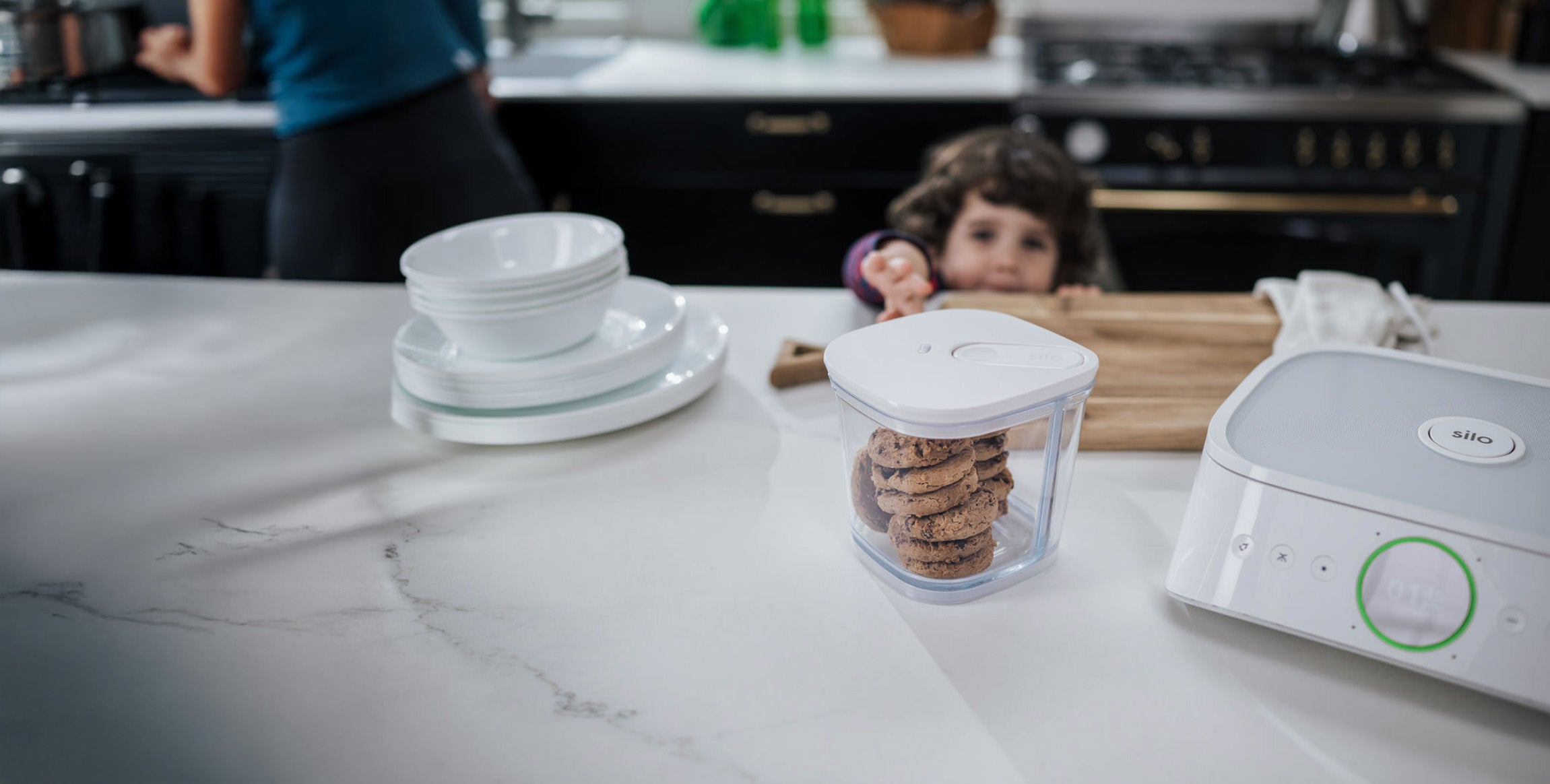What Vacuum Sealing Really Does
And Why It Makes Such a Difference for Freshness
If you’ve ever opened a bag of chips only to find them stale, or reached for a bunch of berries that molded before midweek, you’ve seen what air and time can do. Most of us know that sealing things tightly helps food last longer. But what exactly does vacuum sealing do? And why does it work so well?
This post breaks down the science behind vacuum sealing in plain terms. You’ll learn why it helps, when it matters most, and how it fits into a regular kitchen routine. This isn't about prepping for emergencies or running a restaurant. It's about everyday storage that actually works. And yes, Silo plays a role in that—but only after the why is clear.
Let’s start with the basics.
Why Air Is the Enemy of Freshness
The main thing vacuum sealing does is remove oxygen. That single action slows down or stops a whole range of spoilage processes.
Oxygen feeds bacteria and mold. It also causes oxidation, which is the chemical reaction that turns fats rancid, coffee stale, and apples brown. When you remove most of the air around food, you reduce the fuel those processes need to get started. Less air means fewer microbes, slower decay, and better taste over time.
This doesn’t mean food lasts forever, but it gives you more time—sometimes days, sometimes weeks—depending on what you're storing. And it’s not just about safety: vacuum sealing also helps with texture, flavor, and even moisture.
What Vacuum Sealing Actually Prevents
- Bacterial growth. Most spoilage bacteria need oxygen to grow. Removing oxygen slows their multiplication (refrigeration is still required).
- Mold and fungus. Vacuum sealing deprives mold spores of the air they need to thrive.
- Oxidation. A low-oxygen environment protects flavor and nutrients—think nuts, coffee, or guacamole.
- Moisture loss or absorption. Juicy foods stay juicy; dry goods stay crisp.
- Freezer burn. Removing air prevents icy crystals from forming on frozen foods.
Professional kitchens have used vacuum sealing for years. Now it's part of regular home kitchens, too—without bulky gear or disposable bags.
Everyday Foods That Benefit Most
- Berries. Stay fresh up to a week or more when stored dry and unwashed.
- Bread. Keeps texture longer; prevents freezer burn when frozen.
- Leftovers. Stews, soups, and cooked meats remain flavorful and moist.
- Cheese. Hard and soft cheeses avoid dried-out edges or crusty corners.
- Pantry staples. Coffee beans, flour, cereal, and nuts stay aromatic and crisp.
You don’t need to vacuum-seal everything, but for foods you want to preserve longer it’s one of the most effective tools available.
So, Where Does Silo Fit In?
Traditional vacuum sealers can be a hassle: single-use plastic bags, tubes, clamps, and lots of counter space. That’s fine for bulk storage, but not great for daily use.
Silo was built to change that. It’s a modern vacuum system designed for real kitchens. No special bags, no complicated setup. Just place the container on the base, press once, and it seals from the bottom using a patented vacuum design that works with solids, liquids, and powders.
Silo then asks what’s inside, logs the item, tracks how long it should last, and reminds you before it goes bad. Containers are stackable, durable, and dishwasher-safe—helping your kitchen stay clearer.
The real value? It works without getting in the way. One press, one word, and food that lasts long enough to be used.
Final Thought
Vacuum sealing is one of the most effective ways to fight food waste, save money, and eat what you already bought. It keeps ingredients fresher, makes leftovers better, and helps you plan meals with less stress.
You can use big machines and plastic bags—or you can use something that fits your kitchen and rhythm. Either way the principle is the same: less air, more time, better food.



